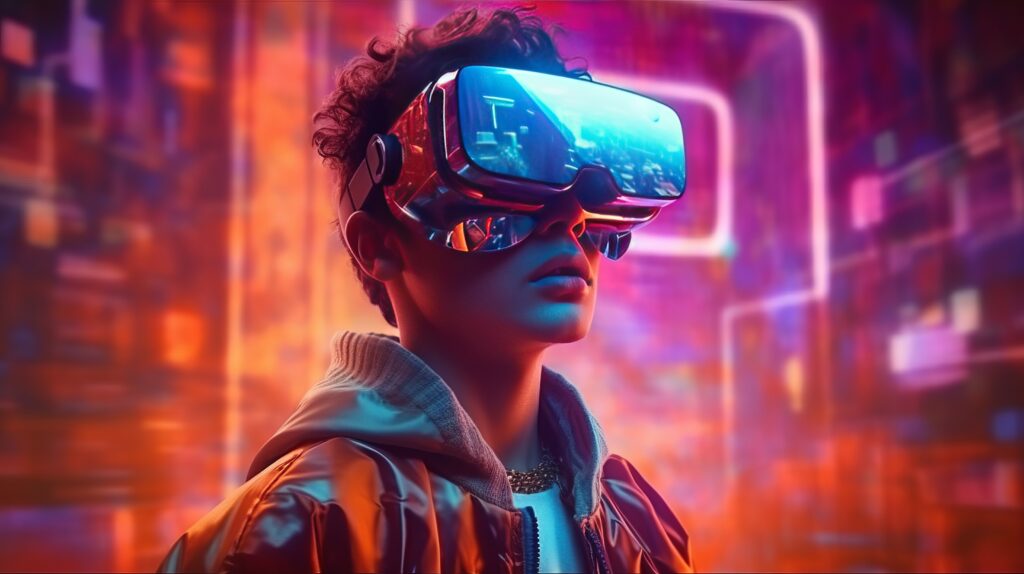
Tony Tran, the chairman and CEO of Peer Inc, believes that the waning interest in non-fungible tokens (NFTs) and the metaverse, particularly among corporations and tech giants like Meta, does not indicate their demise. Instead, Tran suggests that it signifies a natural cycle of innovation. In written responses to inquiries from Bitcoin.com News, Tran, whose company developed the 3D social networking app Peer, emphasized that early adopters of new technologies often encounter a similar downward trend.
Lack of Knowledge Emerges as a Significant Obstacle to Mass Adoption
Tran identified ignorance and the perceived lack of “tangible utility” as key factors contributing to the public’s seemingly limited interest in NFTs. However, he expressed the belief that these barriers can be overcome by effectively educating the public about the value of digital ownership and the diverse potential applications of NFTs.
Regarding the sudden surge in popularity of Bitcoin NFTs, Tran acknowledged the ongoing debate but emphasized that his focus lies less on a binary “yes or no” response to Bitcoin NFTs and more on leveraging blockchain technology to deliver value to individuals. The CEO also shared with Bitcoin.com News his belief that the metaverse represents just the initial stage of a new era of digital interactions.
The following are Tran’s comprehensive responses to the questions posed by Bitcoin.com via Telegram:
Bitcoin.com News (BCN): In your opinion, what are the primary obstacles hindering the widespread adoption of NFTs, and what steps can be taken to enhance their practical value in our daily lives?
Tony Tran (TT): The two primary challenges are education and utility. A significant number of individuals still lack understanding of NFTs and fail to recognize their significance. To address this, we must enhance public education efforts regarding the value of digital ownership and the wide-ranging potential applications of NFTs. Subsequently, we need to establish platforms and systems that offer concrete and practical utility for NFTs, extending beyond their current perception as digital collectibles and art. Our vision entails NFTs playing a pivotal role in domains such as content creation, gaming, and social interactions within the digital realm.
BCN: Your company is developing a Web3 social app that utilizes augmented reality to overlay a social network onto the physical world. What unique features does it offer in comparison to existing Web2 and Web3 social networks? Additionally, how does your app facilitate interactions between users and enable the integration of people and content into the metaverse, if at all?
TT: Our objective with the Peer social app is to dissolve the boundaries between the digital and physical domains. Unlike existing Web2 networks that operate within the confines of the conventional Internet, and many Web3 networks that concentrate solely on the digital realm, our app unifies these two realms. It enables users to engage with both physical and digital elements simultaneously.
Consider the possibility of placing a digital artwork in a real-world location for others to explore and interact with. This type of user-generated content and experience represents a novel frontier in social networking. Our app empowers users to create and share unique digital content that seamlessly integrates with their physical surroundings, fostering a new level of engagement and interaction.
BCN: In 2022, numerous traditional business organizations embraced NFTs and the metaverse. However, in 2023, fewer corporations are pursuing these initiatives. Notably, Meta, one of the prominent tech giants that initially embraced the metaverse, has essentially scaled back or abandoned its efforts in this area. In light of this development, what implications does this have for platforms like Peer that are still in the process of building?
TT: The recent retraction of corporations and tech giants like Meta should not be interpreted as the demise of NFTs or the metaverse. Instead, it reflects the natural ebb and flow of innovation. It is common for early adopters to encounter challenges when exploring new technologies, which can result in temporary slowdowns or shifts in direction.
However, at Peer, we perceive this as an opportunity. As a nimble and forward-thinking company, we are well-equipped to adapt to the evolving landscape and persist in our mission to bring NFTs and the metaverse into the mainstream. We firmly believe that the potential of these technologies remains vast and largely untapped.
BCN: Constructing a digital layer that gamifies the real world will likely necessitate the use of Geo-NFTs. Can you explain how Geo-NFTs function and whether it is feasible to prevent malicious actors from falsifying their location to gain access to these NFTs?
TT: Geo-NFTs establish a connection between real-world geographic locations and distinctive digital assets, acting as a link between physical space and digital ownership. While the concern of location spoofing is valid, we address it by employing advanced location verification techniques and integrating them with robust blockchain security measures. Our primary focus is to create a secure, equitable, and enjoyable experience for all users, safeguarding against malicious activities.
BCN: The Bitcoin Ordinals NFTs have garnered significant attention from both enthusiasts and critics of NFTs. Debates have emerged, with some asserting that these NFTs contradict Satoshi’s original vision of Bitcoin as a peer-to-peer payment system, while others argue that embracing innovation is essential for Bitcoin to maintain its position atop the cryptocurrency landscape. What are your thoughts on this matter?
TT: While I acknowledge the ongoing debate, my emphasis lies less on a definitive “yes or no” stance regarding Bitcoin NFTs and more on leveraging blockchain technology to deliver value to individuals. Whether it’s through Bitcoin, Ethereum, or any other platform, what truly matters is pushing boundaries and exploring the possibilities that emerge.
BCN: In your opinion, do you believe the metaverse represents the ultimate peak of our digital interactions, or is it merely a precursor to something even more advanced and immersive?
TT: I envision the metaverse as merely the initial step towards a transformative era of digital interactions. Envision a world where the limitations imposed by physical geography or traditional interfaces no longer exist. Instead, we can engage, collaborate, and enjoy shared experiences within a digital realm. This future world values digital art as highly as physical art, witnesses virtual concerts with the same fervor as physical ones, and seamlessly blends work and play. I firmly believe that our future interactions will surpass our current imagination, offering enhanced dynamism, immersion, and personalization. NFTs, in my view, will play a pivotal role in materializing this vision.



